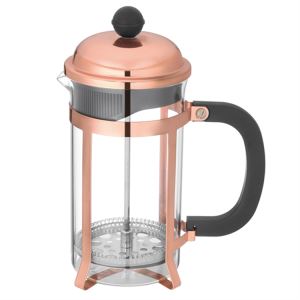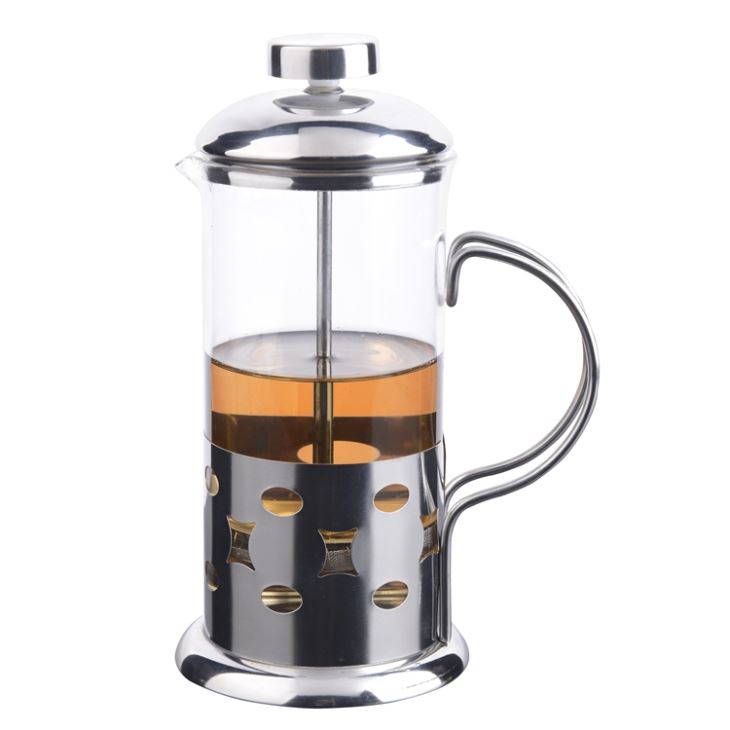


French Press with Stainless Steel Handle
-
Payment


-
Origin
China Mainland
-
Minimum Order
5
-
Packing
Pieces
- Contact Now Start Order
- Description
Product Detail
French press with stainless steel handle
Our company specializes in producing French press. A cylindrical pot with a plunger and built-in filter screen that presses hot water through ground coffee: that’s the simple beauty of the French press, method of choice for many the world over, creating an earthy, rich taste in the cup.
1. Product Introduction of the French Press
The french coffee press is made by heat resistant borosilicate glass, resisting high temperature more than 200 degree. Advanced technics makes the products beautiful and practical and durable, strong. Eco-friendly, non-poisonous, all kinds styles.
2. Product Introduction of the French Press
Model NO.: | WY-S416 |
Type: | Coffee Maker&Tea Maker |
Style: | French Press |
Processlng Material: | Coffee Powder&Tea |
Material: | Stainless Steel + Glass |
Package: | One PC/Bag/White Box |
Main Keyword: | French Press |
Specification: | 350ml;600ml;800ml;1000ml |
Capacity: | 1~10 Cups |
Usage: | Home Use,Commercial |
Color: | Natural |
Origin: | China |
HS Code: | 7013490000 |
3. Product Feature And Application of the French Press
Features:
Experience barista-style flavors without a hefty price tag! A lifetime of delicious beverages, with no need to replace filters or purchase expensive toxic plastic K-cups. PORTABLE espresso coffee or teapot maker for travel & outdoor camping. QUIET for the office environment | EASY TO USE & CLEAN: Easier to use than a drip coffeemaker. Brews within minutes and no soggy filters to deal with. Quickly disassembles for cleaning. Rinse out with warm soapy water and a soft sponge/rag.
4. Production Details of the French Press
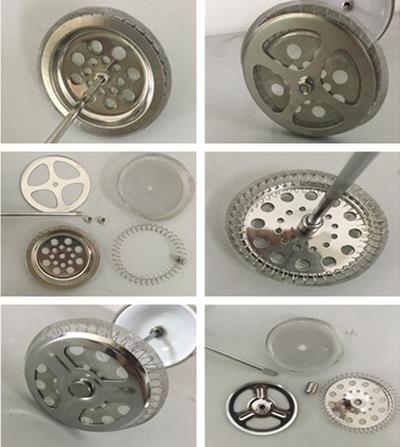

5. Introduction of factory production and packaging
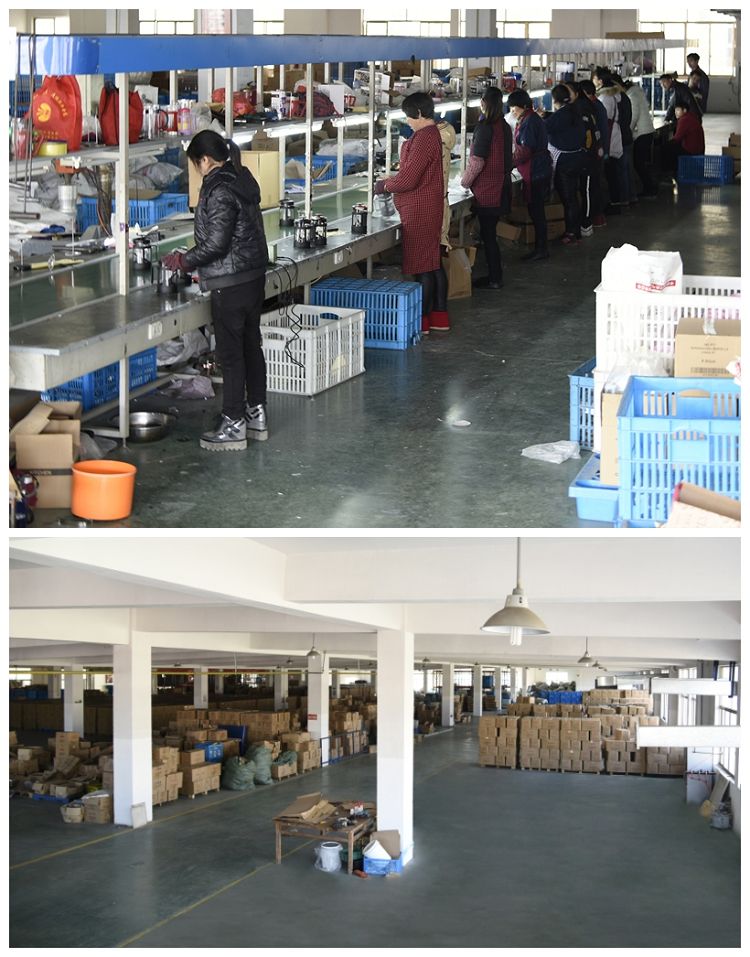
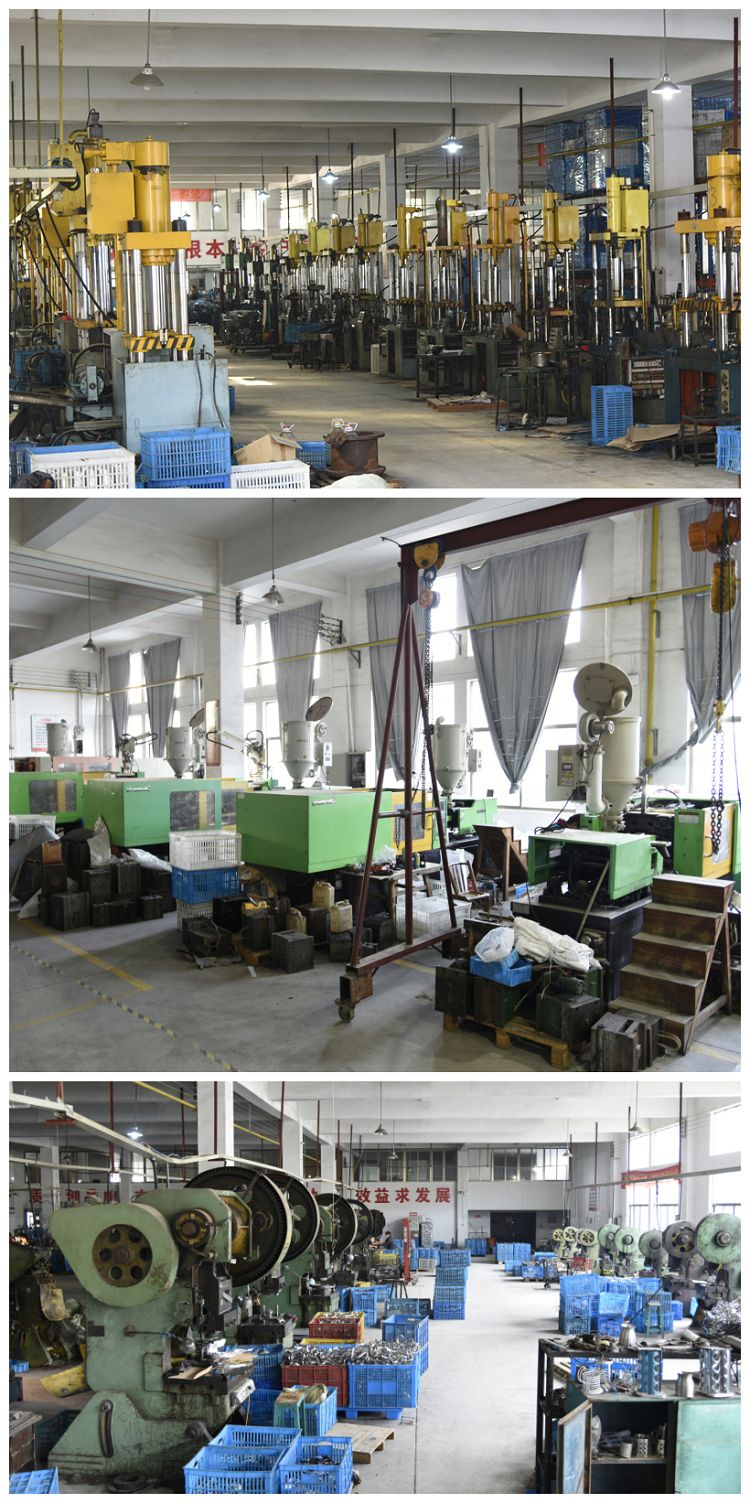
6.French Press Usage method
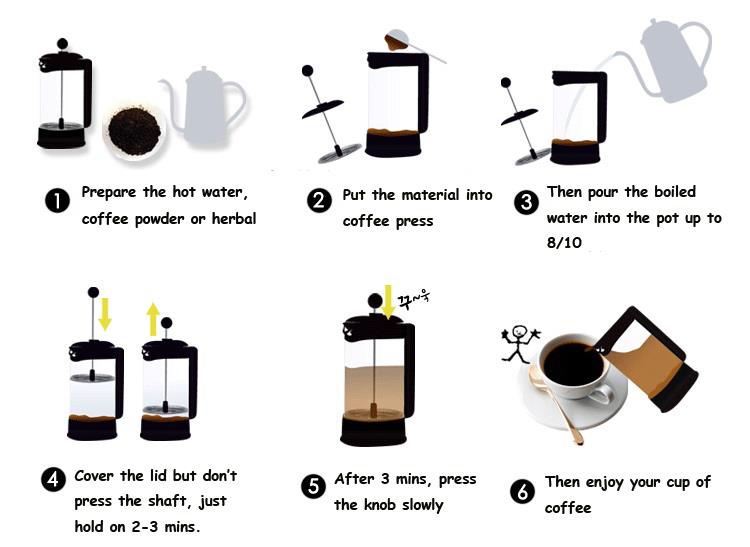
7. Clean the glass with a damp towel immediately after turning off the fire.
When the coffee liquid is filtered to the end, remove the ball from the glass and do not let the last coffee flow.
Ps: use the way of siphon brewing coffee, clean and preservation of the filter cloth is quite troublesome work, it is used for the first time after the fabric was changed from white to brown, accumulating cannot completely remove the fat and protein, is exposed to air will produce the disgusting stench, seriously affecting the delicious coffee.
Turkish coffeepot.
Operation method
First, we will introduce what is called "boiled" coffee. Cook - put the thing in the water and boil it with a torch. But the "cooking" of boiling coffee is the process of "washing" the taste of the coffee in 92-96 degrees of water. So a lot of people misunderstand the word. If you really put coffee in the water to "cook", you get drinks will no longer be a cup of coffee, but a cup of bitter anxious burnt flavour (when the water temperature reached 96 degrees or more), 96 degrees above the temperature of the oil, can put the coffee in the sheen and astringent taste.
France
Antoine Galland (1646–1715) in his aforementioned translation described the Muslim association with coffee, tea and chocolate: "We are indebted to these great [Arab] physicians for introducing coffee to the modern world through their writings, as well as sugar, tea, and chocolate." Galland reported that he was informed by Mr. de la Croix, the interpreter of King Louis XIV of France, that coffee was brought to Paris by a certain Mr. Thevenot, who had travelled through the East. On his return to that city in 1657, Thevenot gave some of the beans to his friends, one of whom was de la Croix.
In 1669, Soleiman Agha, Ambassador from Sultan Mehmed IV, arrived in Paris with his entourage bringing with him a large quantity of coffee beans. Not only did they provide their French and European guests with coffee to drink, but they also donated some beans to the royal court. Between July 1669 and May 1670, the Ambassador managed to firmly establish the custom of drinking coffee among Parisians.
Germany
n Germany, coffeehouses were first established in North Sea ports, including Bremen (1673) and Hamburg (1677). Initially, this new beverage was written in the English form coffee, but during the 1700s the Germans gradually adopted the French word café, then slowly changed to the word Kaffee, where it stands now. In the 18th century the popularity of coffee gradually spread around the German lands, and was taken up by the ruling classes. Coffee was served at the court of the Great Elector, Frederick William of Brandenburg, as early as 1675, but the first public coffee house in his capital, Berlin, opened only in 1721.
Composer Johann Sebastian Bach, who was cantor of St. Thomas Church, Leipzig, in 1723–50, conducted a musical ensemble at Café Zimmermann in that Saxon city. Sometime in 1732–35 he composed the secular "Coffee Cantata" Schweigt stille, plaudert nicht (BWV 211), in which a young woman, Lieschen, pleads with her disapproving father to accept her devotion to drinking coffee, then a newfangled fashion.
The libretto includes such lines as:
Ei! wie schmeckt der Coffee süße,
Lieblicher als tausend Küsse,
Milder als Muskatenwein.
Coffee, Coffee muss ich haben,
Und wenn jemand mich will laben,
Ach, so schenkt mir Coffee ein!
(Oh! How sweet coffee does taste,
Better than a thousand kisses,
Milder than muscat wine.
Coffee, coffee, I've got to have it,
And if someone wants to perk me up, *
Oh, just give me a cup of coffee!)
- Red Square French Press 5 Pieces / (Min. Order)
- Silver Grey French Press 5 Pieces / (Min. Order)
- Gold Spray Paint French Press 5 Pieces / (Min. Order)
- Champagne Square French Press 5 Pieces / (Min. Order)
- Brass French Press 5 Pieces / (Min. Order)
- Heat Resistant Borosilicate Glass Tea Maker 5 Pieces / (Min. Order)
- French Press with Filter 5 Pieces / (Min. Order)
- Borosilicate Glass Coffee Tea Maker 5 Pieces / (Min. Order)
- Spray Color French Press 5 Pieces / (Min. Order)
- Coffee Tea Makers French Press 5 Pieces / (Min. Order)
- Brew Tea Coffee Maker 5 Pieces / (Min. Order)
- The Best French Press Pot 5 Pieces / (Min. Order)
- 8 Cup French Press 5 Pieces / (Min. Order)
- French Press Coffee Pot Cozy 5 Pieces / (Min. Order)
- Best French Press Coffee Pot 5 Pieces / (Min. Order)
- French Press Plunger 5 Pieces / (Min. Order)
- Line Handle Round Cover French Press 5 Pieces / (Min. Order)
- French Tea Press Pots 5 Pieces / (Min. Order)

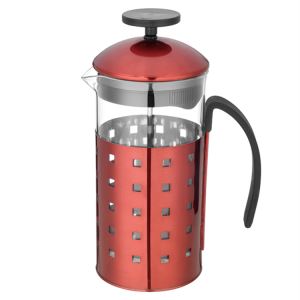
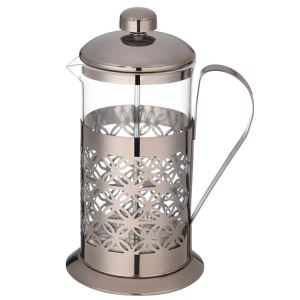
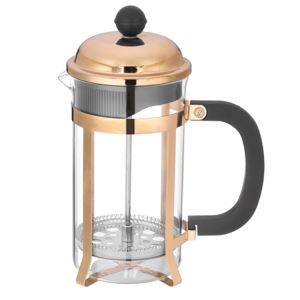
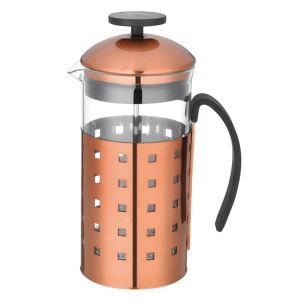
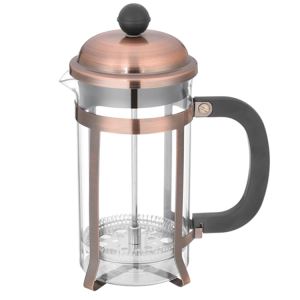

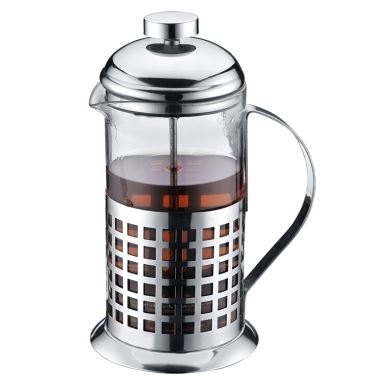
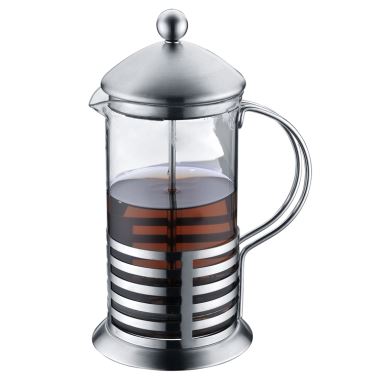
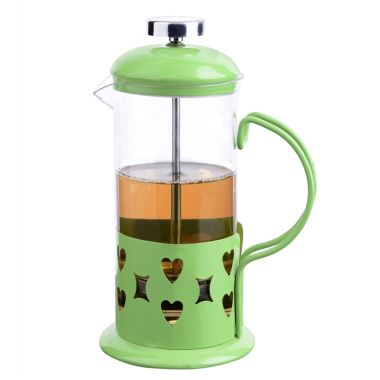
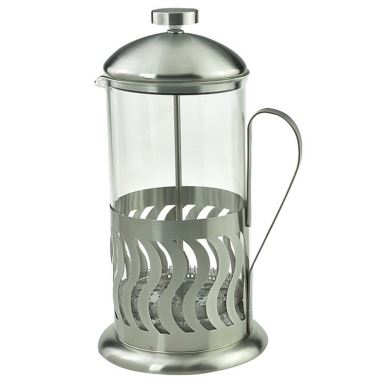

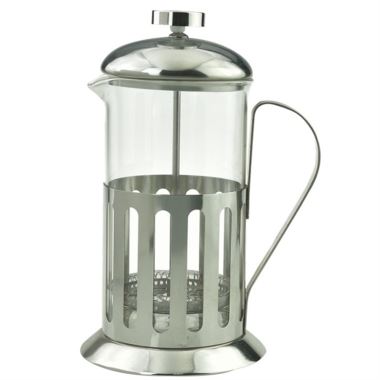
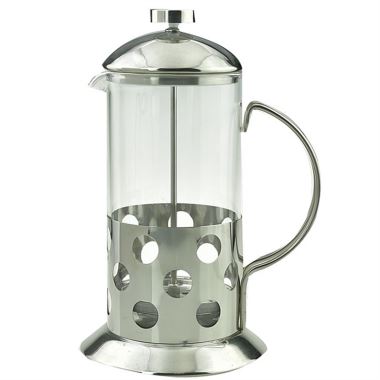
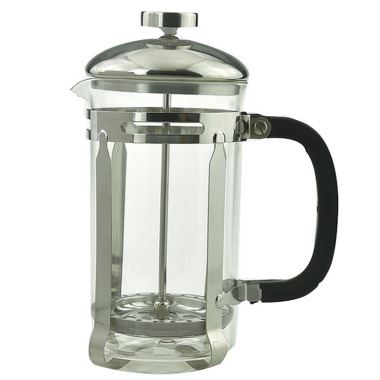
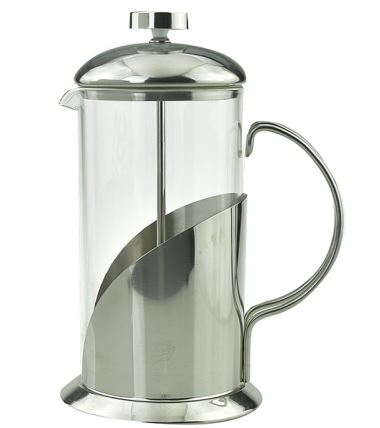
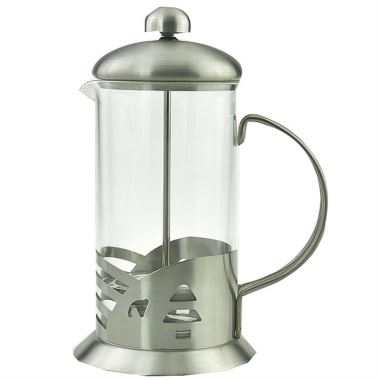
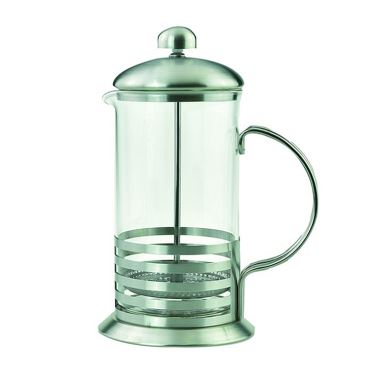

 Favorites
Favorites

